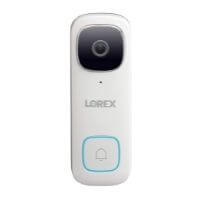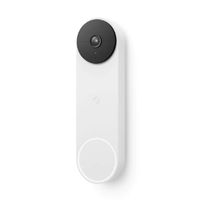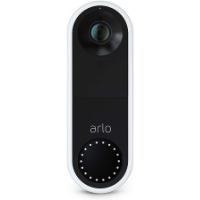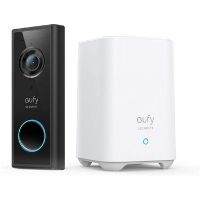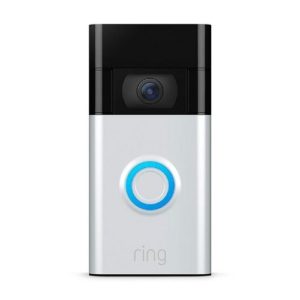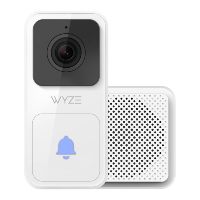Lorex's reputation for excellent video quality continues with the Lorex 2K Video Doorbell. Its 2K QHD video resolution is the highest on any video doorbell—double that of 1080p HD—and right up there with Eufy's 2K doorbell offerings.
We like that the 164º field of view is wide enough to capture plenty of action in front of the camera. While there's a noticeable fisheye effect around the edge of videos, it's not an issue for subjects in the center of the frame.
Resolution and field of view aren't everything, so we dug into recordings and screenshots to see how it holds up:
- Daytime video shows plenty of detail.
- High Dynamic Range (HDR) setting makes for vibrant colors. The HDR also helps balance out shadows on visitors, so you don't miss important details.
- The video doorbell also performs well at night, thanks to color and infrared night vision options.
Color night vision is noteworthy because Lorex is the only brand we know with the feature on a video doorbell. (Color night vision is more common on spotlight cameras—like Reolink, Ring, and Arlo.)
Although the color night vision can't match the detail of daytime video, it looks great close to the camera. As with most low-light videos, it can be grainy at times but should work for most folks. For greater range, infrared night vision is the way to go. There's no color, but you'll see more detail overall.
Lorex relies entirely on local video storage—there's no cloud storage—and we're here for it. Viewing recordings is effortless in the Lorex app; you can download them to your phone as needed.
But what sets Lorex apart from other video doorbells is how much storage comes in the box. It comes with a 32 GB microSD card, double the internal storage of the Eufy Video Doorbell 2K. By comparison, most smart doorbells with a local storage option don't even include a memory—that's a separate purchase.
The icing on the Lorex cake is that you can swap out the included card for a larger one—up to 256 GB. While this can't match the unlimited storage on Wyze cameras, that brand doesn't offer local storage on video doorbells.
When the Lorex 2K Video Doorbell's microSD card isn't enough, you can connect it to network video recorders (NVRs) like Lorex Fusion and Lorex Home Center. The systems can increase local storage possibilities up to 10 TB—depending on the model you choose. You'll pay a premium to add an NVR, but it's one of the best ways to store security footage from multiple Lorex cameras in one place.
Lorex offers two types of smart motion detection:
- Motion zones
- Person detection
These are extremely helpful when you don't want notifications for every motion event. Smart detection also greatly maximizes local storage space by skipping unnecessary recordings.
You'll set up motion zones in the Lorex app by drawing up to three distinct zones on an image of your doorbell camera's view. Anything that moves in these zones will trigger a recording.
Motion zones are fairly common on most video doorbells, so we're glad that Lorex offers person detection too. The concept behind person detection is simple; it doesn't capture non-human subjects on video. Lorex even allows you to set up "person motion zones" to ignore other types of motion.
Despite its helpful tools, the Lorex 2K Video Doorbell lacks the robust smart detection of Nest; our top doorbell pick—there's nothing specific for animals, vehicles, packages, and familiar faces like Nest offers.
